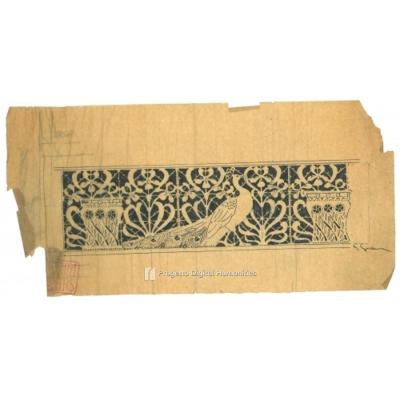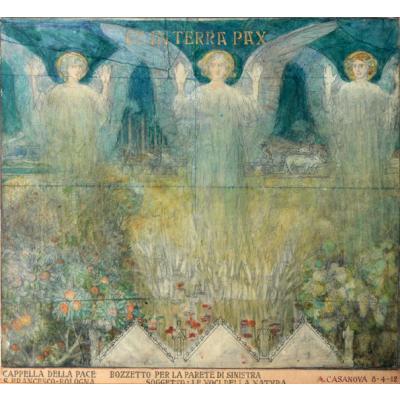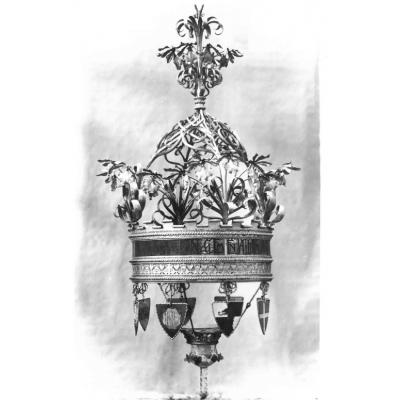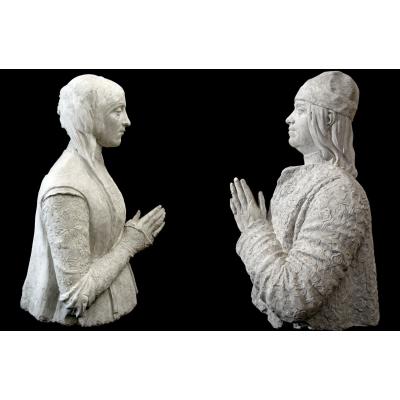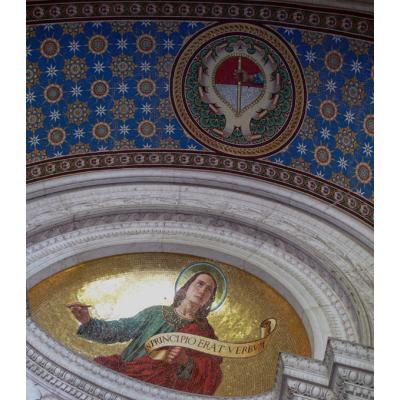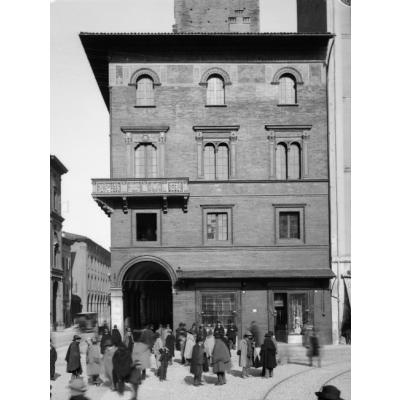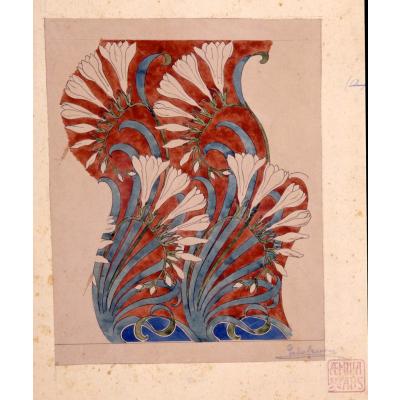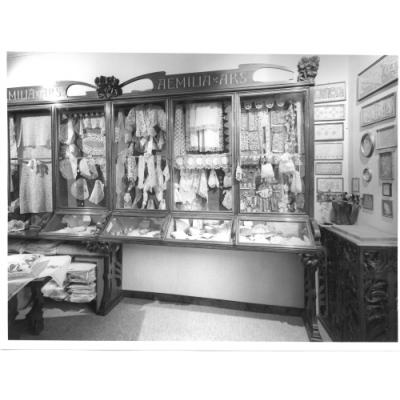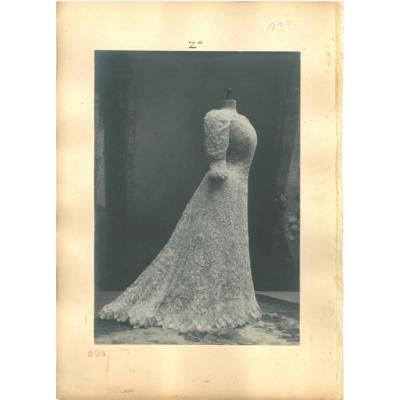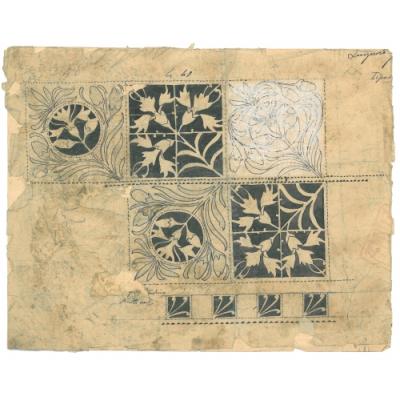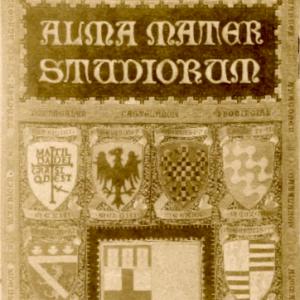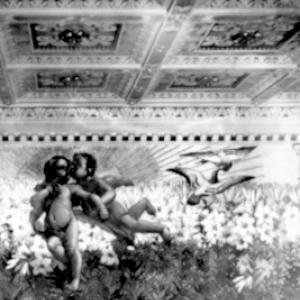Schede
The Società Aemilia Ars was founded in 1898, with the aim of creating a renewal in the field of the applied arts, using concepts similar to those of analogous foreign companies, which had, however, other outcomes and sequelae. Alfonso Rubbiani, the enterprise's originator, brought to it the careful observation and study of medieval art as a basic attitude in which to draw on the forms of nature, on foliate motifs, also with elegant zoomorphic figures - elements of clear Liberty derivation; it was always seen, however, more as a recovery of pre-existing ancient forms of expression than as new experiments in the field of art. These concepts of his, with pre-Raphaelite background components and Gothic influences, especially in architecture and the applied arts, would have a considerable influence on the cultural climate of Bologna and in particular on artists such as Casanova, Tartarini, Romagnoli, who assisted him in the artistic activity of the Aemilia Ars. The hall set up by the Aemilia Ars for the International Exhibition of Turin in 1902 was a great success and was attended by such different artistic personalities as Dudovich, Baruffi, Romagnoli, Sezanne and Casanova. Dudovich's posters, Romagnoli's sculptures, the embossed leather bindings, and Baruffi's ex Libris and lace were particularly admired, while the furniture, weighed down by excessive floral decoration, was criticized. The intention of Rubbiani and his collaborators was to discover new avenues for decorative art, removing any excess and following naturalness as an ornamental principle.
On the administrative side, the Aemilia Ars, with a cooperative structure, was headed by Count Francesco Cavazza; the minimum paid-up capital (15,000 Lire) meant that it was not an industrial company, but an association of friends, united by the intention of strengthening the various artistic industries of the region, bringing them to a technically more perfect level and modernizing individual productions, often marked by impeccable execution, but forced to passively copy the styles of past centuries. The company's first task was therefore to create close relations and true collaboration between artists, workers and clients, with the common aim of achieving increasingly significant results. At the Turin Exhibition, the success and admiration of the Aemilia Ars' production had raised hopes for a true rebirth of craftsmanship on new foundations and assumptions by means of the Bolognese school, and undoubtedly a significant result had been achieved: from the collaboration between artists and craftsmen, from the discussion of each small piece, everything that came out of the Aemilia Ars had a character of stylistic homogeneity that made its products unmistakable. Unfortunately, probably because of economic difficulties, due to a small financial base and a limited market, the company broke up in 1903, interrupting this intelligent form of experimentation which would undoubtedly have taken longer to consolidate and obtain a wider commercial consensus. However, it was thought, in order that not everything of the first initiative would be lost, to limit the activity of the Aemilia Ars to that production which was perhaps more successful with the public in every country and was economically more secure: the lace and embroidery industry. In the 16th and 17th centuries Bologna had been a lively hub for the diffusion and creation of this age-old female industry: in fact, two important albums of lace models were published in 1591 and 1639. The decision was made to return to that ancient tradition, with an attempt to reproduce the lace models proposed, and a lace sample book was thus created. Alongside this activity, embroideries were also made based on designs by various contemporary artists, decidedly oriented towards the creation of modern lace, with floral motifs, plant weaves and geometric decorative elements in obvious Liberty style. The Aemilia Ars thus recomposed itself in the form of a fully-fledged Women's Work Cooperative, under the guidance and activity of Countess Lina Bianconcini Cavazza, who continued working until the end of her days. The artistic director was Alfredo Rubbiani and, at his death, Achille Casanova. For such early times, the structure and organisation of the cooperative was singularly efficient and modern: there were specific offices for design, preparation, distribution and collection of items; in order to allow the workers a greater family availability, there was no workshop - each woman could work in her own home; it was administered by a Board elected by the Shareholders' Meeting; a Lady presided over the management and preparation department; the workers' representatives participated in the formation of labour prices and 50% of the profits were allocated to female workers.
Elisa Ricci writes about the particular characteristic of Aemilia Ars lace in the preface of the volume, edited by Countess Lina Cavazza, Merletti e ricami della Aemilia Ars (Lace and embroidery of the Aemilia Ars) on pg. 6: "Less sumptuous and light, the laces of Venice, the laces of the Aemilia Ars, have neither the frivolous and soft grace of the French, nor the troubling inconsistency of the Flemish, but speak clearly and sweetly (as is the Bolognese language) in their language with vague classical resonances. They wish to be stretched out on the table or on the bed or hang from the altar... but they do not want to hide, within their curls and folds, the beauty of the design which they consider to be their greatest value. Indeed, it was desired and obtained that the main concern of the workers was to maintain the purity of the design, leaving to the work the uncertainties and deformations that make it interesting and attractive only when it is natural and straightforward". The reticello stitch or antique stitch, progenitor of all lace, was mainly used in the lace-making: in common use it took the name of the Aemilia Ars stitch. The success of the Cooperative was also remarkable on the commercial side; proof of this is the comparison between two balances: while in 1900 production was for 8,306.30 lire in 1909 it had risen to 209,411.50 lire.
The Cooperative took part in numerous exhibitions, distinguishing itself everywhere also in the international field, such as the Copenhagen Exhibition in 1903, the Saint Louis Exhibition in 1904, where it won the Grand Prize; in 1905 at the International Lace Competition in Liège it won the Grand Prize and the gold medal of the Belgian Government and in 1910 the Grand Prize at the Brussels Exhibition, gaining significant acclaim in the very country which, by ancient tradition, is considered the home of lace.
Reference bibliography: Il Liberty a Bologna e nell'Emilia Romagna, catalogo della mostra , GRAFIS, Bologna, 1977.

